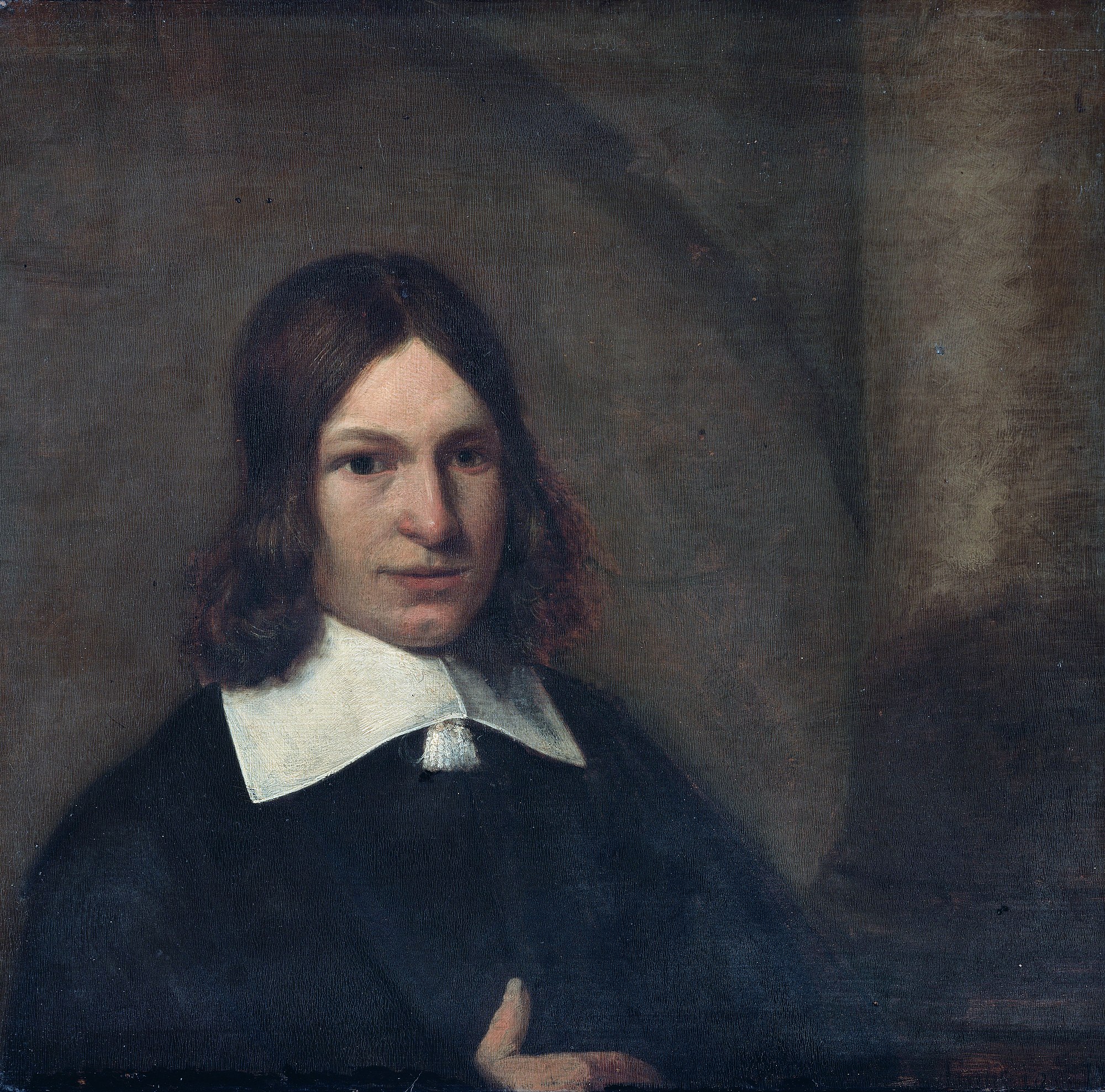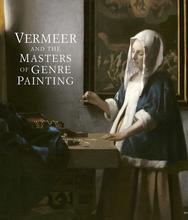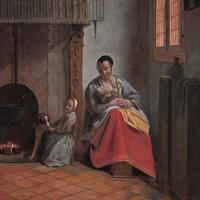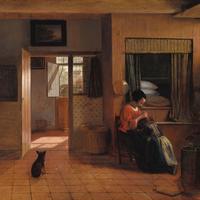More about Pieter de Hooch
- All
- Info
- Shop
Works by Pieter de Hooch
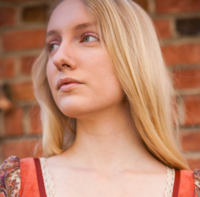
Editor
Pieter de Hooch sure could paint a room with a view… typically that view was a view of another room, but a view nonetheless.
Despite a fairly distinctive body of work, not much is known about Pieter de Hooch’s life. The Golden Age painter was born in Rotterdam in 1629 to a bricklayer father and a midwife mother. Early art historian Arnold Houbraken informs us that he studied under the painter Nicolaes Berchem with Jacob Ochtervelt, likely in Haarlem, before making his way to Delft in 1652.
A few years later, he married Jannetje van der Burch, who is believed to have been the sister of the painter Hendrik van der Burch. In 1655, he was admitted to the Delft painters’ guild. He only paid three of the twelve guilders needed for membership, and records indicate that he never got around to paying off his membership dues. He worked in Delft for a time, where he likely influenced (and was influenced by) the work of Vermeer, and in the 1660s moved to Amsterdam. At one point he even had a second job or trade as a cloth merchant–day jobs apparently being a necessity for many artists even in the 17th century.
Though he got his start painting merry company scenes similar to those of Leyster, he is most famous for the domestic scenes he painted starting in the mid-1650s. These domestic interiors often involve middle-class women and servants going about their chores and tenderly, if matter-of-fact-ly, taking care of children. Such paintings often carry a moral message, and are frequently interpreted as reflecting the Dutch Republic’s perception of the nuclear home as a microcosm for the new Dutch state, and motherhood and housekeeping a reflection of the health of the nation. (No pressure on moms at all! It’s just the fate of the entire country at stake when you pick the lice out of your children’s hair.)
What is most distinctive about de Hooch’s work is his use of multiple scenes combined into one painting, typically through a device like an open door or window leading into another room or courtyard. This kind of complex scene was described by the influential Flemish art theorist Karel van Mander in his 1604 “Schilder-Boeck” (“Book on Picturing”), in which he recommended employing such framing devices, which he called “doorsien” (meaning “looking through”), as a way to draw viewers into the image. De Hooch excelled at the geometric perspective needed to make such complicated scenes of doorways and windows and sunny courtyards work. His beautifully precise “looking-through” interiors, replete with the mundane details of seventeenth century private life, are his signature. In fact, according to the art historian Martha Hollander, only 12 out of 160 of his paintings do not utilize this framing device. So while his figures are criticized as being rather wooden-looking, the narrative quality afforded by these secondary and tertiary spaces was appealing to buyers, and though de Hooch lived in a poor part of Amsterdam, he had a number of patrons in the middle and upper classes.
For a long time it was thought that Pieter de Hooch died in the dolhuys (insane asylum) in Amsterdam in 1684. His last known painting dates to that year, and the decline in quality of his work at this time was considered evidence of his deteriorating mental condition. However, historians now think that the records show it was actually Pieter’s son, also named Pieter, who died in the asylum that year, and the circumstances of the elder Pieter de Hooch’s death are unknown.
Sources
- Grijzenhout, Frans. "New Information on Pieter de Hooch and the Amsterdam lunatic asylum," The Burlington Magazine (September 2008): 612-613.
- Muller, Sheila D. Dutch Art: An Encyclopedia. New York: Garland Publishing, Inc., 1997.
- Sutton, Peter C. Pieter de Hooch, 1629-1684. New Haven: Yale University Press, 2008.
- Pieter de Hooch. Rijksmuseum. Accessed February 28, 2023. https://www.rijksmuseum.nl/en/rijksstudio/artists/pieter-de-hooch
- Janson, Jonathan. The School of Delft: Pieter de Hooch & Johannes Vermeer. Essential Vermeer. Accessed February 28, 2023. http://www.essentialvermeer.com/fakes_thefts_school_of_delft_lost_sp/sc…
Featured Content
Here is what Wikipedia says about Pieter de Hooch
Pieter Hendricksz. de Hooch (
Dutch: [ˈpitər ˈɦɛndrɪksoːn də ˈɦoːx]; also spelled Hoogh or Hooghe; bapt. 20 December 1629 – after 1683), was a Dutch Golden Age painter famous for his genre works of quiet domestic scenes with an open doorway. He was a contemporary, in the Delft Guild of St. Luke, of Jan Vermeer with whom his work shares themes and style. De Hooch was first recorded in Delft on 5 August 1652, when he and another painter, Hendrick van der Burgh witnessed the signing of a will. He was active in 1683, but his date of death is unknown (his son Pieter died in 1684, a date often wrongly given for the father).
Check out the full Wikipedia article about Pieter de Hooch

